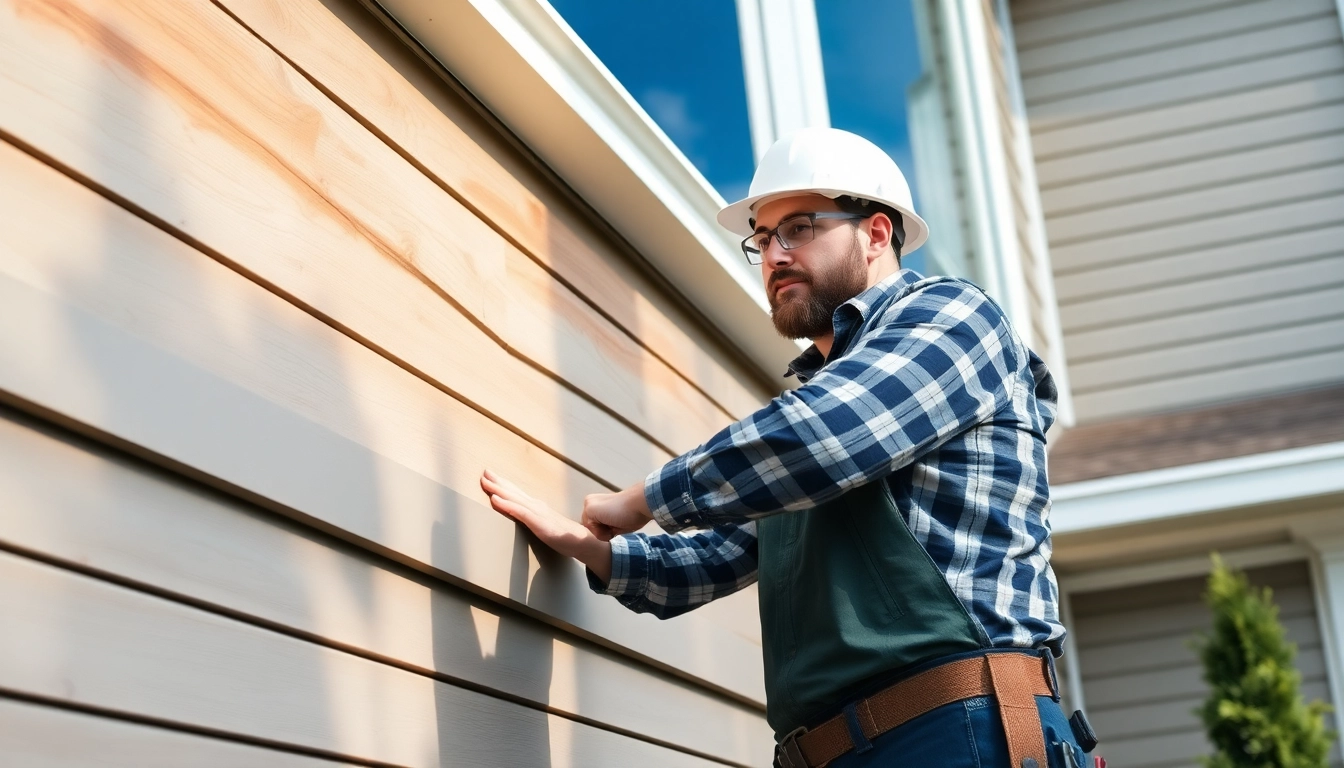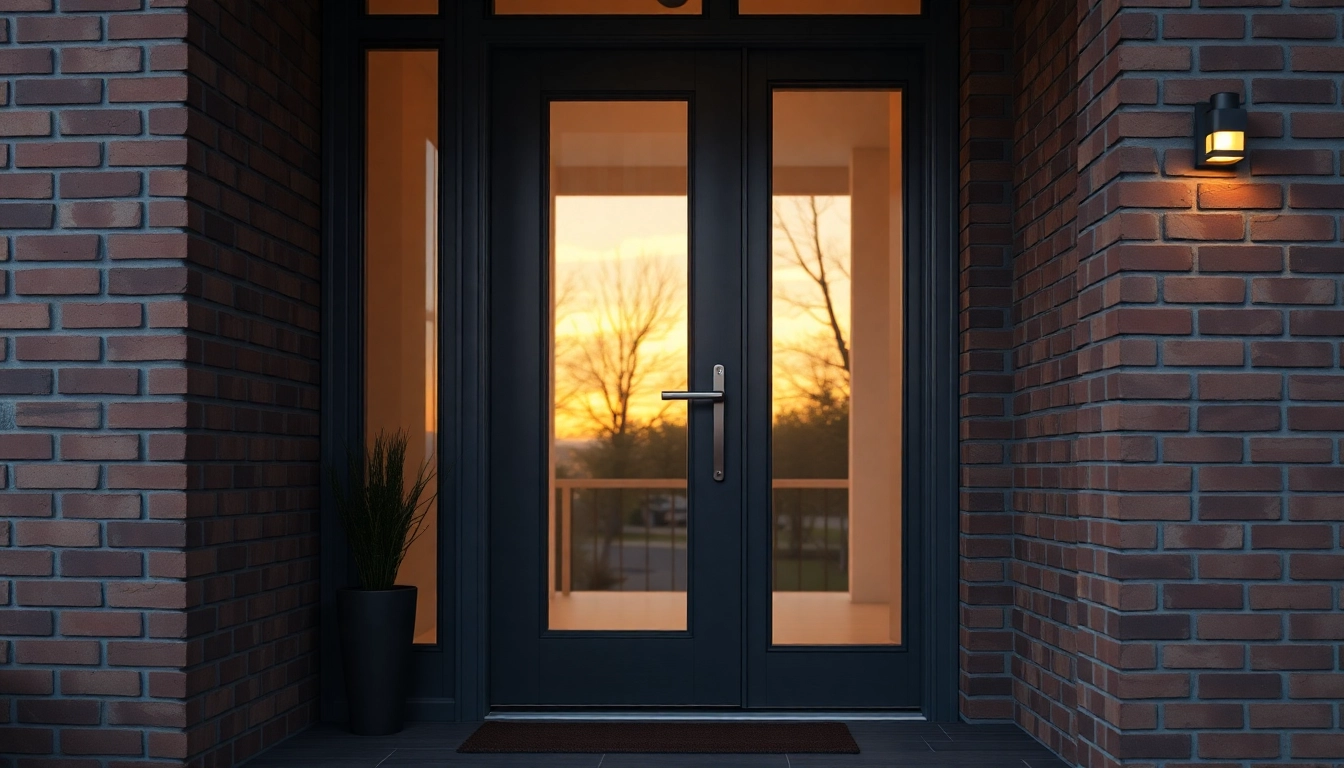Understanding the Role of a Siding Contractor
When it comes to enhancing the exterior of your home, a professional siding contractor plays a crucial role. They are the specialists responsible for the selection, installation, and maintenance of siding materials that protect, insulate, and beautify residential and commercial buildings. Their expertise not only ensures that your siding is properly installed but also that it withstands the test of time, weather, and wear.
What Does a Siding Contractor Do?
A siding contractor’s primary responsibilities encompass a range of services from initial assessment to final installation. They evaluate the structural integrity of your home’s exterior, recommend suitable siding types based on your aesthetic preferences and budget, and oversee the entire installation process. This includes removing old siding, repairing underlying structural issues, and meticulously installing new siding to ensure seamless fit and durability.
More specifically, their tasks include:
- Conducting on-site assessments to determine the existing condition of the walls and any remediation needed.
- Providing detailed estimates based on materials, labor, and project scope.
- Assisting in choosing appropriate siding materials such as vinyl, cedar, fiber cement, or metal.
- Preparing the surface for optimal adhesion and weatherproofing.
- Ensuring proper insulation and vapor barrier installation.
- Applying siding using industry-standard techniques to maximize lifespan and aesthetic appeal.
- Handling permits and ensuring compliance with local building codes.
- Providing warranties and post-installation maintenance advice.
Types of Siding Materials Offered
A reputable siding contractor offers a wide spectrum of materials, each with distinct properties, costs, and benefits. Understanding these options helps homeowners select the best solution tailored to their needs.
- Vinyl Siding: Popular for its affordability, durability, and low maintenance, vinyl siding is available in numerous colors and styles. It resists pests and rot but can be prone to cracking in extreme cold.
- Cedar Siding: Known for its natural beauty and authenticity, cedar offers aesthetic appeal with excellent insulation qualities. It requires regular maintenance to prevent decay and insect infestation.
- Fiber Cement (Hardie Board): A composite material that mimics wood or masonry, fiber cement provides high durability, fire resistance, and minimal maintenance. It’s suitable for various climates.
- Metal Siding: Including aluminum and steel options, metal siding is highly resistant to weather, pests, and fire. It offers a modern, industrial look but can be noisy during rain or hail.
- Certain Cladding Options: Such as brick veneer, stone, or stucco, often used in conjunction with other siding types to enhance architectural appeal.
Key Qualifications and Certifications
Skilled siding contractors possess certifications and qualifications that validate their expertise and adherence to industry standards. Certifications such as James Hardie Elite Preferred Contractor, James Hardie Master Contractor, or being licensed and bonded in your state ensure quality craftsmanship and accountability.
Important credentials include:
- State licensing and bonding, ensuring legal compliance and financial protection.
- Manufacturer certifications like James Hardie, Vinyl Siding Institute (VSI), or National Association of the Remodeling Industry (NARI).
- Continuing education and training on latest installation techniques and safety standards.
Choosing the Right Siding Contractor for Your Project
How to Evaluate Experience and Reputation
Selecting a dependable siding contractor is fundamental to the success and longevity of your siding project. Start by researching local companies with proven track records. Look for contractors with numerous completed projects in your area, positive customer reviews, and a history of consistent quality.
Websites like Angi and Houzz offer reviews and ratings that can provide insights into a contractor’s reputation. Additionally, requesting references from previous clients allows you to discuss their satisfaction and any challenges encountered during their projects.
To evaluate experience, inquire about:
- Number of years in business specializing in siding installation.
- Type and scope of projects they’ve completed (residential, commercial, complex designs).
- Availability of advanced training and certifications.
Questions to Ask Before Hiring
To ensure clarity and set expectations, ask pertinent questions such as:
- Can you provide a detailed written estimate including materials, labor, permits, and potential additional costs?
- Do you have insurance coverage and licensing documentation?
- What is your estimated timeline from start to completion?
- Are you experienced with the specific siding material I prefer?
- Do you offer warranties or guarantees on your work?
- Can you provide references from recent clients?
Estimating Project Costs and Timelines
Cost estimation varies based on the siding material, project size, geographic location, and the contractor’s rates. As a reference, vinyl siding typically costs between $2.50 and $10.75 per square foot, including materials and installation. For a standard 2,000-square-foot home, total costs range from $10,000 to $21,500 depending on the chosen material and complexity.
Timelines depend on project scope but generally span from a few days for smaller jobs to several weeks for extensive siding replacement. Contractors should provide a clear schedule with milestones and contingency plans for unforeseen issues like structural repairs or weather delays.
Having a transparent discussion about costs and timelines upfront minimizes misunderstandings and helps you plan financially and logistically.
Best Practices in Siding Installation and Repair
Preparation and Surface Assessment
Proper preparation is critical for long-lasting siding. The contractor begins by inspecting the existing structure for damage, moisture issues, mold, or termite activity. Repairing or replacing compromised framing, sheathing, or insulation ensures a stable base for siding installation.
Surface assessment involves checking for uneven walls, old paint, or debris. Ensuring the surface is clean, dry, and level prevents future problems such as warping, cracking, or gaps.
Installation Techniques for Longevity
High-quality installation involves precise measurements, proper fastening, and adherence to manufacturer guidelines. Techniques include:
- Installing a weather-resistant barrier to prevent moisture infiltration.
- Using corrosion-resistant nails or screws to secure siding without deforming panels.
- Maintaining proper expansion gaps to accommodate temperature fluctuations.
- Ensuring seamless joints and overlaps to prevent water penetration.
- Adding flashing and sealing around windows, doors, and vents.
Common Mistakes to Avoid
Errors can compromise your siding’s performance and lifespan. Common mistakes include:
- Over-tightening fasteners, leading to warping or buckling.
- Neglecting proper surface preparation, resulting in poor adhesion and damage.
- Failing to follow manufacturer installation instructions.
- Using incompatible or low-quality materials.
- Ignoring local building codes and permitting requirements.
To avoid these pitfalls, hiring experienced professionals with a detailed understanding of industry standards is essential.
Cost Factors and Budgeting for Siding Projects
Average Costs for Different Siding Types
Understanding the cost implications of various siding materials aids in budgeting:
- Vinyl Siding: $2.50 – $10.75 per sq ft. Total for a home: approximately $10,000 – $21,500.
- Cedar Siding: $5 – $10 per sq ft, plus maintenance costs.
- Fiber Cement (Hardie): $5 – $13 per sq ft. Total for a 2,000 sq ft house: $20,000 – $40,000.
- Metal Siding: About $5 – $14 per sq ft.
- Stone or Brick Veneer: Significantly higher, often over $30 per sq ft.
Factors Affecting Pricing
Several elements influence total project costs, including:
- Project size and complexity.
- Type and quality of siding material selected.
- Existing condition of the building (need for repairs or structural modifications).
- Labor market rates in your area.
- Accessibility of the site and ease of equipment setup.
- Supplementary work such as window trim, insulation, or decorative elements.
Tips for Getting the Best Value
To maximize your investment:
- Request multiple detailed quotes to compare pricing and scope.
- Prioritize quality over lowest cost to avoid costly repairs later.
- Choose reputable contractors with proven experience and warranties.
- Opt for durable, low-maintenance siding to reduce long-term costs.
- inquire about financing options or seasonal discounts.
Maintaining and Extending Your Siding’s Lifespan
Regular Inspection and Cleaning
Proactive maintenance preserves the integrity and appearance of your siding. Schedule inspections at least twice a year, ideally during spring and fall, to identify damage such as cracks, loose panels, or fading. Regular cleaning with gentle, non-abrasive solutions removes dirt, mold, and grime that can accelerate deterioration.
When to Consider Repairs or Replacement
Small issues like loose panels or minor cracks can often be repaired promptly, extending the siding’s lifespan. However, extensive damage, persistent moisture intrusion, or noticeable warping typically necessitate full replacement. Recognizing signs such as paint peeling, mold growth, or increased energy bills indicates underlying problems that require professional evaluation.
Choosing Eco-Friendly and Durable Options
Sustainable siding materials and practices are increasingly important. Recyclable options like fiber cement and metal siding reduce environmental impact. Additionally, selecting insulated siding layers enhances energy efficiency, lowering heating and cooling costs. Proper insulation, combined with durable materials, ensures your home remains comfortable and eco-friendly over decades.


